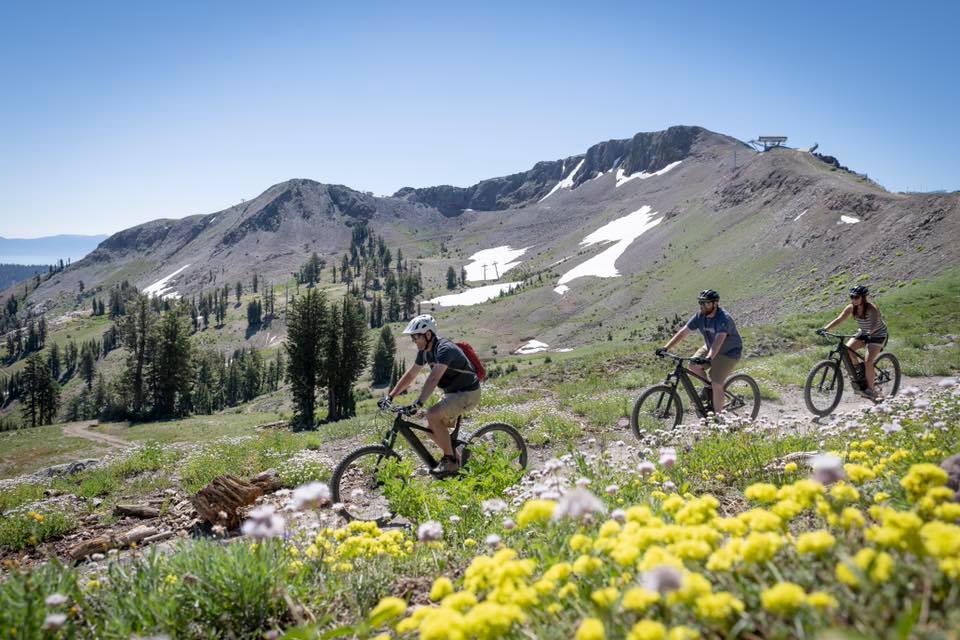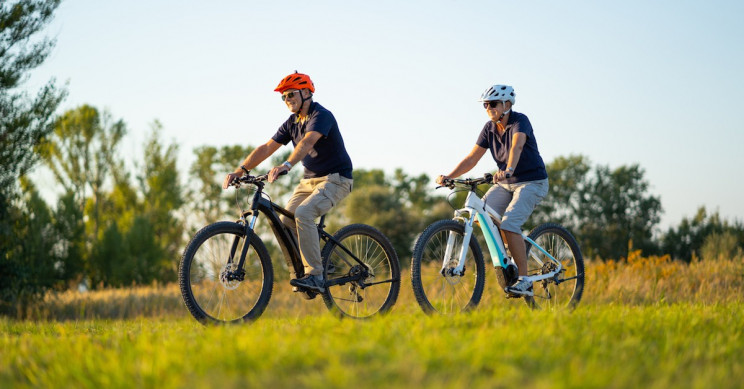
Decision Subject to 45-Day Administrative Review Process.
SOUTH LAKE TAHOE, Calif., Sep. 27, 2024 – The USDA Forest Service Lake Tahoe Basin Management Unit (LTBMU) has released the final Environmental Assessment (EA) and Draft Decision Notice (DN) for the Basin Wide Trails Analysis Project, which examined e-bike use and trail system access and connectivity on National Forest lands in the Lake Tahoe Basin. Depending on the Administrative Review process, the final decision could be released as early as January 2025.
“Based on my review of the analysis in the Basin Wide Trails Analysis Final EA, I have decided to authorize the construction, operation, and maintenance of Alternative 1.”
– Erick Walker, Forest Supervisor, Lake Tahoe Basin Management Unit
The main proposal includes designating existing non-motorized trails for e-bike use, constructing new trails for e-bikes and motorcycles, decommissioning some trails, and building new trailheads and facilities. The project covers multiple counties in California and Nevada within the Lake Tahoe Basin. The Forest Supervisor has authorized Alternative 1, which includes several significant actions:
- Designating 112.6 miles of existing non-motorized trails for e-bike use.
- Constructing 27.5 miles of new e-bike trails and 14.7 miles of non-motorized trails.
- Three new trailheads will be built with paved parking and visitor information signage.
- Upgrading existing trails and stream crossings to meet best management practices.
The decision aims to balance conservation efforts with public access to recreational opportunities, addressing the increasing demand for e-bike access while protecting sensitive environmental resources. The LTBMU engaged in extensive public involvement, receiving 496 unique comments during the scoping period, which helped shape the final proposal.
Alternative 1 Explained
Alternative 1 focuses on creating a sustainable trail system that accommodates various user types while minimizing conflicts. It includes:
- Changing existing motorcycle trails to allow e-bikes.
- Decommissioning some trails to enhance overall trail quality.
- Opening previously closed roads to e-bikes.
- Designating existing unmanaged trails for non-motorized use.
This alternative reflects a commitment to improving trail connectivity and accessibility, ensuring that recreational needs are met without compromising the area’s ecological integrity.
Interested community members and stakeholders who have previously commented on the project and have standing to object will have an opportunity to do so during the 45-day Administrative Review Period (objection period) scheduled to begin Friday, September 27, with the publication of the Legal Notice in the newspaper of record, the Tahoe Daily Tribune.
“The LTBMU has released the final environmental document and draft decision for this highly anticipated project. The administrative review period provides an opportunity for those who previously commented to submit additional comments before we move forward with implementation.”
– Deputy Forest Supervisor Rosalie Herrera
In the Lake Tahoe Basin, e-bike use is permitted on National Forest roads and trails designated for motor vehicle use per the Forest Service’s Travel Management Rule and Motor Vehicle Use Maps.
The planning process for this large-scale trail connectivity project included analyzing the current road and trail system map, studying potential environmental impacts, and providing direction on how to meet the need for e-bike access better while ensuring public safety and protecting forest resources.
Project work will include constructing three new trailheads, paved parking and restrooms at Pine Drop, Brockway Summit and Elks Point; constructing new e-bike trails, new motorcycle trails, and new non-motorized trails; designating new routes open to e-bikes and new routes open to motorcycles; upgrading road and trail crossings for aquatic organism passage; installing wayfinding and interpretive signs; developing and upgrading existing trailheads, parking areas, and access points; and updating the Motor Vehicle Use Maps.
Project documents can be found on the Basin Wide Trails Analysis Project webpage.
